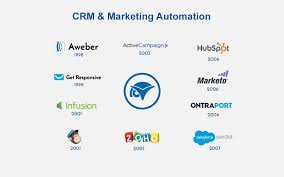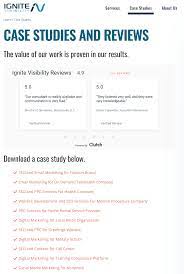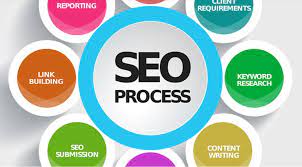SEO Email Marketing: Boosting Your Online Visibility and Conversion Rates
In today’s digital landscape, search engine optimization (SEO) and email marketing have become essential components of any successful online marketing strategy. Individually, they offer unique benefits, but when combined, they can create a powerful synergy that drives organic traffic to your website and boosts your conversion rates. In this article, we will explore the concept of SEO email marketing and how it can help you achieve your business goals.
Firstly, let’s understand the basics of SEO. Search engines like Google use complex algorithms to determine the relevance and authority of websites. By optimizing your website’s content and structure according to these algorithms, you can improve your website’s visibility in search engine results pages (SERPs). This means more potential customers discovering your business when they search for relevant keywords or phrases.
On the other hand, email marketing allows you to directly communicate with your target audience through their inbox. It is a highly effective method for building relationships with customers, nurturing leads, and driving conversions. When done right, email campaigns can generate high-quality leads and encourage repeat purchases from existing customers.
So how do SEO and email marketing work together? Let’s explore some strategies:
- Building an Engaged Email List: SEO techniques such as optimizing landing pages and creating valuable content can attract visitors to your website. By offering them incentives like exclusive content or discounts in exchange for their email addresses, you can build a quality email list of engaged subscribers who are genuinely interested in what you have to offer.
- Personalized Email Campaigns: Once you have an email list, segmenting it based on user preferences or demographics enables you to send targeted emails that resonate with specific groups of subscribers. By tailoring your content to their interests or needs, you increase the chances of engagement and conversions.
- Optimizing Email Content: Applying SEO principles within your emails is crucial for improving deliverability and click-through rates. This includes optimizing subject lines, using relevant keywords in the email body, and ensuring your emails are mobile-friendly and load quickly. These factors contribute to higher open rates and better user experiences.
- Driving Traffic to Your Website: Including links to relevant pages on your website within your email content can drive traffic directly from the inbox to your site. By incorporating SEO best practices such as using descriptive anchor text and optimizing landing pages, you can further enhance the user experience and increase conversions.
- Tracking and Analyzing Results: Both SEO and email marketing provide valuable data that can help you refine your strategies. By monitoring metrics such as open rates, click-through rates, bounce rates, and website traffic, you can identify what is working well and make data-driven decisions to improve your campaigns.
In conclusion, combining SEO with email marketing is a powerful way to enhance your online visibility and improve conversion rates. By leveraging the strengths of both strategies, you can attract more organic traffic to your website while nurturing relationships with your audience through personalized email campaigns. Remember to stay up-to-date with SEO best practices and continuously optimize your email marketing efforts for maximum impact. Start implementing SEO email marketing today and watch as it transforms your online business success!
5 Essential Tips for Effective SEO Email Marketing in the UK
- Include keywords in the subject line to help increase open rates.
- Personalise emails with the recipient’s name and other details to make them feel special.
- Use a clear call-to-action (CTA) such as ‘Sign up now’ or ‘Buy now’ to encourage engagement and conversions.
- Optimise email content for both desktop and mobile devices to ensure all users can access it easily.
- Monitor your results regularly using analytics tools, such as Google Analytics, to identify areas of improvement and track progress over time.
Include keywords in the subject line to help increase open rates.
Boost Your Email Open Rates with Keyword-Rich Subject Lines
When it comes to email marketing, the subject line plays a crucial role in determining whether your recipients will open your email or simply ignore it. One effective tip to improve your open rates is to include relevant keywords in your subject lines. Incorporating keywords strategically can grab the attention of your audience and entice them to click through and engage with your email content.
Why are keywords important in subject lines? Well, think about how people search for information online. They enter specific keywords or phrases into search engines to find what they’re looking for. Similarly, when scanning their overflowing inbox, users often skim subject lines to decide which emails are worth their time. By including relevant keywords that align with their interests or needs, you increase the chances of catching their attention and encouraging them to open your email.
To make the most of this strategy, here are a few tips:
- Research Relevant Keywords: Conduct keyword research to identify terms that are highly relevant to your target audience and align with the content of your email. Tools like Google Keyword Planner can help you discover popular keywords related to your industry or topic.
- Keep it Natural: While incorporating keywords is important, avoid stuffing them unnaturally into your subject line. Aim for a balance between relevance and readability. Remember, you’re writing for humans, not just search engines.
- Be Specific and Clear: Craft subject lines that clearly convey what the email is about while incorporating keywords naturally. Specificity helps set expectations and increases the likelihood of engagement.
- Test and Analyze: Experiment with different variations of subject lines containing different keywords or phrasing. A/B testing can help you determine which approach resonates best with your audience and drives higher open rates.
- Stay Consistent: Ensure that the content within the email matches what was promised in the subject line. Misleading subject lines may lead to disappointment and damage trust with your subscribers.
By including keywords strategically in your subject lines, you can increase the visibility of your emails in crowded inboxes and entice recipients to open them. Remember, relevancy is key, so take the time to understand your audience’s interests and needs. With consistent testing and analysis, you’ll be able to refine your subject lines and improve your email marketing success. Start incorporating keyword-rich subject lines into your email campaigns today and watch as your open rates soar!
Personalise emails with the recipient’s name and other details to make them feel special.
Boost Your Email Marketing Success with Personalization
In the world of email marketing, personalization is a game-changer. Gone are the days of generic mass emails that end up in the spam folder. Today, customers expect personalized experiences that cater to their individual needs and interests. By incorporating personalization into your email campaigns, you can create a sense of connection and make your recipients feel special. Let’s explore how personalizing emails with the recipient’s name and other details can significantly impact your SEO email marketing strategy.
Firstly, addressing your subscribers by their names adds a personal touch to your emails. It shows that you value them as individuals and not just as another name on your list. When people see their names in the subject line or greeting, it immediately grabs their attention and makes them more likely to open and engage with your email.
But personalization goes beyond just using someone’s name. Tailoring the content of your emails based on their preferences, purchase history, or browsing behavior can have a profound impact on engagement rates. By segmenting your email list and sending targeted messages to specific groups, you can provide relevant information that resonates with each recipient.
For example, if you run an online clothing store and know that a particular subscriber frequently purchases women’s shoes, you can send them personalized recommendations or exclusive discounts on footwear. This level of customization shows that you understand their interests and are willing to go the extra mile to meet their needs.
Moreover, personalization extends beyond product recommendations. You can also use dynamic content to display different offers or images based on specific criteria such as location or past interactions with your website. This level of customization creates a more engaging experience for your recipients, increasing the likelihood of click-throughs and conversions.
When it comes to SEO, personalization plays a crucial role in improving user experience signals such as click-through rates (CTRs) and time spent on site – factors that search engines consider when ranking websites. By delivering personalized emails that lead recipients to relevant landing pages on your website, you can boost organic traffic and improve your search engine visibility.
In conclusion, personalization is a key ingredient in successful SEO email marketing. By addressing your subscribers by name and tailoring content to their preferences, you create a stronger connection with your audience and increase engagement rates. This not only leads to higher click-throughs and conversions but also positively impacts your website’s SEO performance. So, start personalizing your emails today and watch as your email marketing success soars to new heights.
Use a clear call-to-action (CTA) such as ‘Sign up now’ or ‘Buy now’ to encourage engagement and conversions.
Boost Engagement and Conversions with Clear Call-to-Action in SEO Email Marketing
When it comes to email marketing, one of the most critical elements for driving engagement and conversions is a clear call-to-action (CTA). A CTA acts as a guiding beacon, directing your recipients towards the desired action you want them to take. In the realm of SEO email marketing, using a concise and compelling CTA can make all the difference in getting your audience to sign up, buy, or take any other desired action.
A clear CTA serves as a prompt that tells your recipients exactly what you want them to do. It eliminates any confusion or ambiguity and encourages immediate action. By using strong and persuasive language, such as “Sign up now” or “Buy now,” you create a sense of urgency and motivate your audience to act promptly.
Here are some tips for creating an effective CTA in your SEO email marketing campaigns:
- Be concise: Keep your CTA short and to the point. Use simple yet impactful words that convey the desired action clearly.
- Use action verbs: Start your CTA with an action verb that compels your audience to take immediate action. Examples include “Get,” “Download,” “Join,” or “Discover.”
- Create a sense of urgency: Incorporate time-sensitive language to create a sense of urgency and encourage immediate response. Phrases like “Limited time offer” or “Don’t miss out” can motivate recipients to act swiftly.
- Make it visually appealing: Design your CTA button or link in a way that stands out from the rest of the email content. Use contrasting colors, bold fonts, or even arrows to draw attention to it.
- Place it strategically: Position your CTA where it is easily visible within the email layout. Ideally, place it above the fold so that recipients don’t have to scroll down to find it.
- Test different variations: Experiment with different CTAs to see which ones resonate best with your audience. A/B testing can help you determine which wording, design, or placement generates the highest engagement and conversion rates.
Remember, the ultimate goal of SEO email marketing is to encourage recipients to take action. A clear and compelling CTA is a powerful tool that can significantly boost engagement and conversions. So, don’t underestimate its importance. Craft your CTAs thoughtfully, test them regularly, and watch as they drive your desired outcomes.
Optimise email content for both desktop and mobile devices to ensure all users can access it easily.
Optimize Your Email Content for Desktop and Mobile: Reaching Every User with Ease
In today’s digital era, where people access information on various devices, it is crucial to optimize your email content for both desktop and mobile users. By ensuring that your emails are easily accessible across different platforms, you can maximize the reach of your message and increase engagement with your audience. In this article, we will explore the importance of optimizing email content for desktop and mobile devices in the context of SEO email marketing.
With the increasing popularity of smartphones and tablets, more and more people are checking their emails on mobile devices. In fact, studies show that a significant portion of email opens occur on mobile devices. Therefore, it is essential to consider the mobile user experience when crafting your email campaigns.
To optimize your email content for both desktop and mobile:
- Responsive Design: Use responsive design techniques to ensure that your emails automatically adapt to different screen sizes. This means that whether someone opens your email on a large desktop monitor or a small smartphone screen, the layout remains visually appealing and easy to read.
- Clear Formatting: Keep your formatting simple and easy to follow. Use clear headings, bullet points, and concise paragraphs to make the content scannable on smaller screens. Avoid long blocks of text that can overwhelm mobile users.
- Font Size and Style: Choose a font size that is legible on both desktops and smaller screens. A font size between 14-16 pixels works well across devices. Additionally, opt for web-safe fonts or use system fonts to ensure consistency across different platforms.
- Call-to-Action (CTA) Placement: Place your CTAs strategically within your email content so they are easily visible on all devices. Consider placing them near the top or bottom of the email where they won’t get lost when viewed on smaller screens.
- Image Optimization: Optimize images in your emails by compressing them to reduce file size without compromising quality. This helps in faster loading times, especially on mobile devices with slower internet connections.
- Testing and Previewing: Before sending out your email campaigns, test them on various devices and email clients to ensure they appear as intended. Many email marketing platforms offer preview options that allow you to see how your emails will look on different devices.
By optimizing your email content for both desktop and mobile devices, you ensure that every user can access your message easily, regardless of the device they use. This not only enhances the user experience but also improves engagement and conversion rates. Remember, in the world of SEO email marketing, catering to the needs of all users is key to achieving success.
Monitor your results regularly using analytics tools, such as Google Analytics, to identify areas of improvement and track progress over time.
Monitoring Your SEO Email Marketing Results: The Key to Continuous Improvement
In the ever-evolving world of digital marketing, staying on top of your SEO email marketing campaigns is crucial for success. One effective way to ensure you’re making progress and achieving your goals is by regularly monitoring and analyzing your results using analytics tools. By leveraging powerful tools like Google Analytics, you can gain valuable insights into the performance of your campaigns, identify areas for improvement, and track your progress over time.
One of the primary benefits of using analytics tools is that they provide a comprehensive overview of your campaign’s performance. You can access data such as open rates, click-through rates, conversion rates, bounce rates, and more. These metrics offer valuable insights into how well your emails are resonating with your audience and driving engagement.
By regularly monitoring these key metrics, you can identify patterns or trends that indicate areas for improvement. For example, if you notice a high bounce rate or low click-through rate on certain emails, it may be an indication that the subject lines or content need to be optimized to better capture the attention of your subscribers.
Additionally, analytics tools allow you to segment and analyze data based on various parameters. This enables you to gain a deeper understanding of specific segments within your email list and tailor your campaigns accordingly. For instance, you can compare the performance of different customer segments based on demographics or past purchase behavior. This information can help you create more personalized and targeted email content that resonates with each segment.
Another advantage of monitoring results regularly is the ability to track progress over time. By setting benchmarks and tracking key metrics on an ongoing basis, you can assess whether your efforts are yielding positive results or if adjustments need to be made. This iterative approach allows you to refine your strategies and optimize future campaigns based on real-time data.
In conclusion, monitoring your SEO email marketing results using analytics tools like Google Analytics is essential for continuous improvement and success in today’s digital landscape. By regularly reviewing and analyzing your campaign metrics, you can identify areas of improvement, make data-driven decisions, and track your progress over time. Embrace the power of analytics to unlock the full potential of your SEO email marketing efforts and achieve your business goals.



